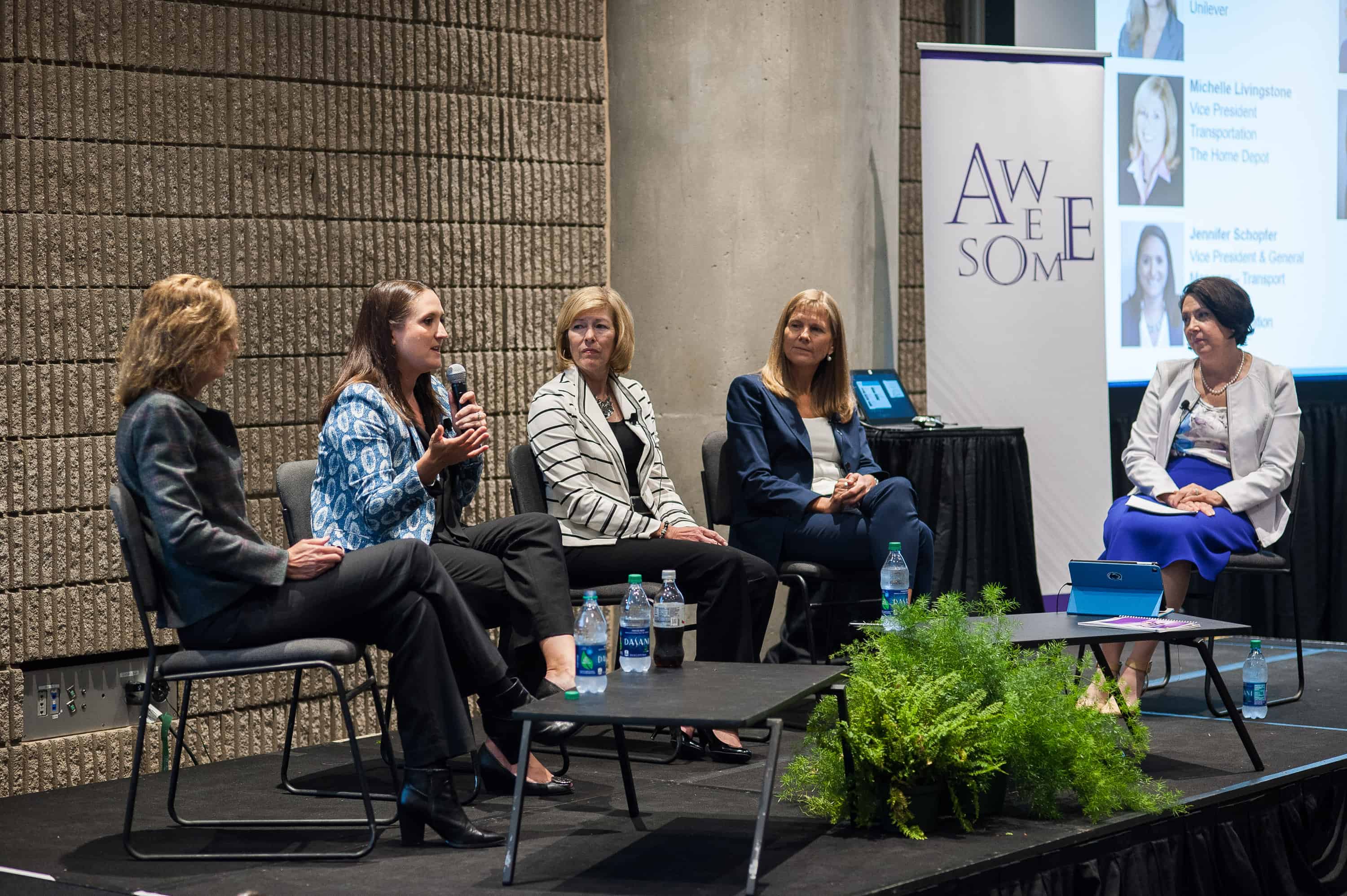AWESOME leaders explored supply chain innovation from many angles at the Mega Session powered by AWESOME at the 2017 CSCMP Edge conference. They gave insights on what innovation is and isn’t, what gains can be achieved, what the barriers are, and how companies can create an innovation-friendly environment. They also gave examples of high-impact results their companies – Caterpillar, GE, The Home Depot, and Unilever – have been able to achieve through innovation.
 The discussion was led by Heather Sheehan, Director of Member Engagement & Sponsorships, AWESOME, and former VP and co-Chief Procurement Officer, Danaher Corporation.
The discussion was led by Heather Sheehan, Director of Member Engagement & Sponsorships, AWESOME, and former VP and co-Chief Procurement Officer, Danaher Corporation.
Panelists included Wendy Herrick, VP Supply Chain GTM US, Unilever; Michelle Livingstone, VP, Transportation, The Home Depot; Jennifer Schopfer, VP, General Manager – Transport Logistics, GE Transportation; and Barbara Schwarzentraub, Director, Divisional CFO, Caterpillar.
What innovation is
The stage was set for the discussion by moderator Heather Sheehan proposing a definition: Supply chain innovation is the implementation of sustained breakthrough process improvements to optimize customer response, cost, and asset utilization according to the competitive strategy of the business.
Panelists agreed that the current rate of change in the marketplace makes innovation critical. In fact, “If you don’t innovate, you become irrelevant.”
What innovation is NOT
Although the following may be important elements of innovation; they don’t by themselves constitute innovation. Innovation is not just…
- A systems implementation or automation of an existing process
- Shifting costs to another supply chain partner
- An organization restructure or redesign
Potential gains achieved by innovation
In addition to opportunities for major gains in revenue and market share, these are some of the typical gains achieved through successful supply chain breakthroughs:
- Cost reductions (direct and indirect)
- Improved process flexibility
- Improved cross-functional strategic alignment
- Lower supply case risk
- Improved customer satisfaction
- Improved working capital turns
Barriers to innovation
Panelists pointed out that innovation succeeds when it’s cross-functional, and that frequently requires crossing traditional boundaries and breaking down silos that still exist in many organizations. For that reason, the major barrier may be getting people to work together, share data, and step out of their comfort zone.
A basic first step for getting past barriers is to be very clear about the problem that needs to be solved, followed by setting aligned goals and targets and rewarding people based on those. Panelists agreed it’s essential to establish a culture where it’s ok to fail – and where ideas are rewarded even if they don’t always work out.
A diverse team with diverse thinking is another innovation driver.
Panelists also suggested that “Digitization is a key enabler to breaking down functional silos and silos across companies and businesses.”
Approaches to innovation
The companies represented on the panel face different challenges and have different needs for innovation. They shared some innovation strategies that have achieved good results at their companies.
- Setting up an innovation group or center where a particular challenge can be posed to outsiders – a start-up or a university class
- Brainstorming with people involved up and down your supply chain, customers, suppliers, other manufacturers
- Switching perspectives and seeing the business and the experience from the customer’s viewpoint (In this case, that shift led to an innovative “interconnected retail strategy.”)
- Turning to new forms of data analytics and teaming data scientists with operations pros
- Using disrupters – revolutionary changes in the market or in consumer behavior — as a starting point. External disruptors influence supply chain strategy because they call up the question of whether a particular change is temporary or long-term. One of these disruptors for a company like Caterpillar is the sharing economy, where people are coming to accept sharing equipment.
- Leveraging with customers and partners the types of technologies used internally.
- Digitizing across and outside the boundary of your own organization, not just what’s within your control
- Setting up agile units (“speedboats”) that can come up with and test innovative ideas before trying to implement throughout the organization (“mothership”).
Eight essentials for successful supply chain innovation
- Clear purpose and Incentives
- Supports business strategy
- Alignment of goals
- Problem-solving discipline
- Ability to think cross functionally and collaborate
- Environment that accepts risk and rewards innovative ideas
- Data and analytics
- Talent to implement
“The speed of change means we need to keep unleashing the talent of all of our employees much more than we have in the past. It means we’re not going to be so hierarchal. We’re going to have to make decisions throughout our supply chain and encourage that innovation.”